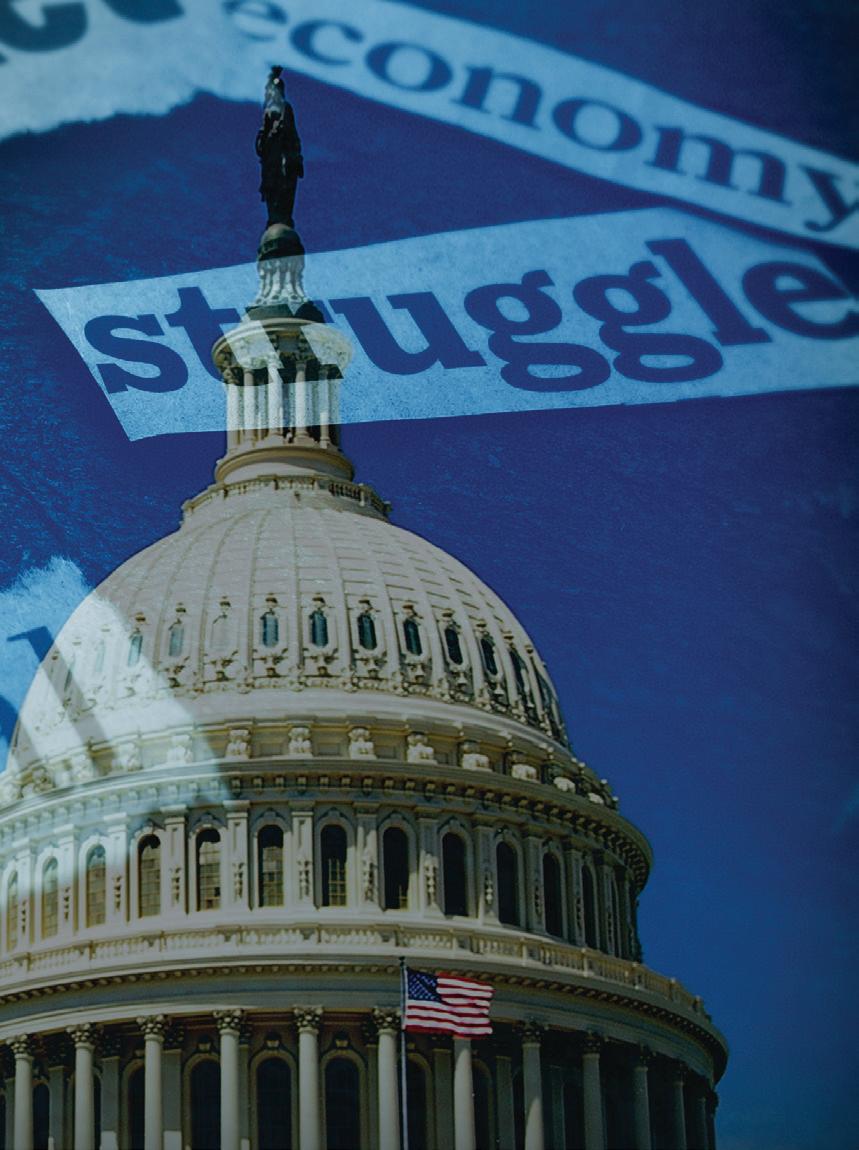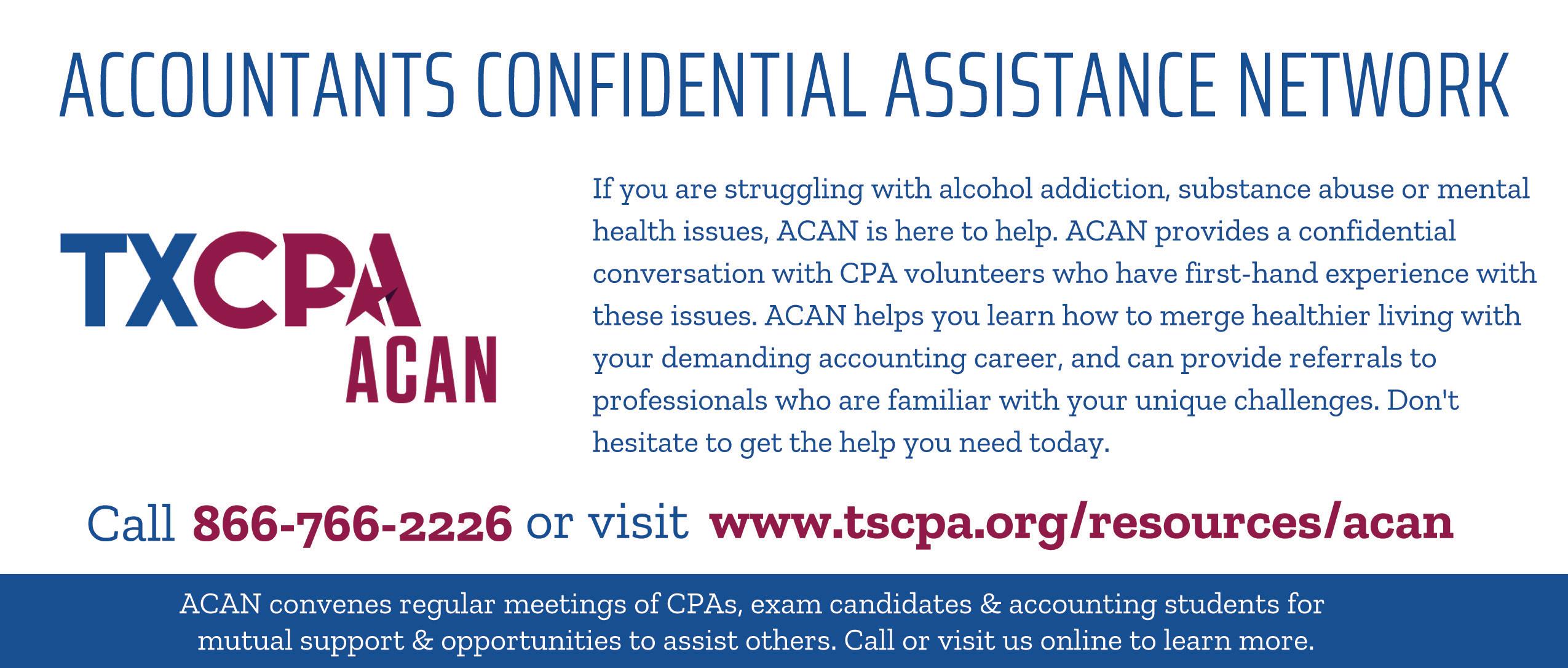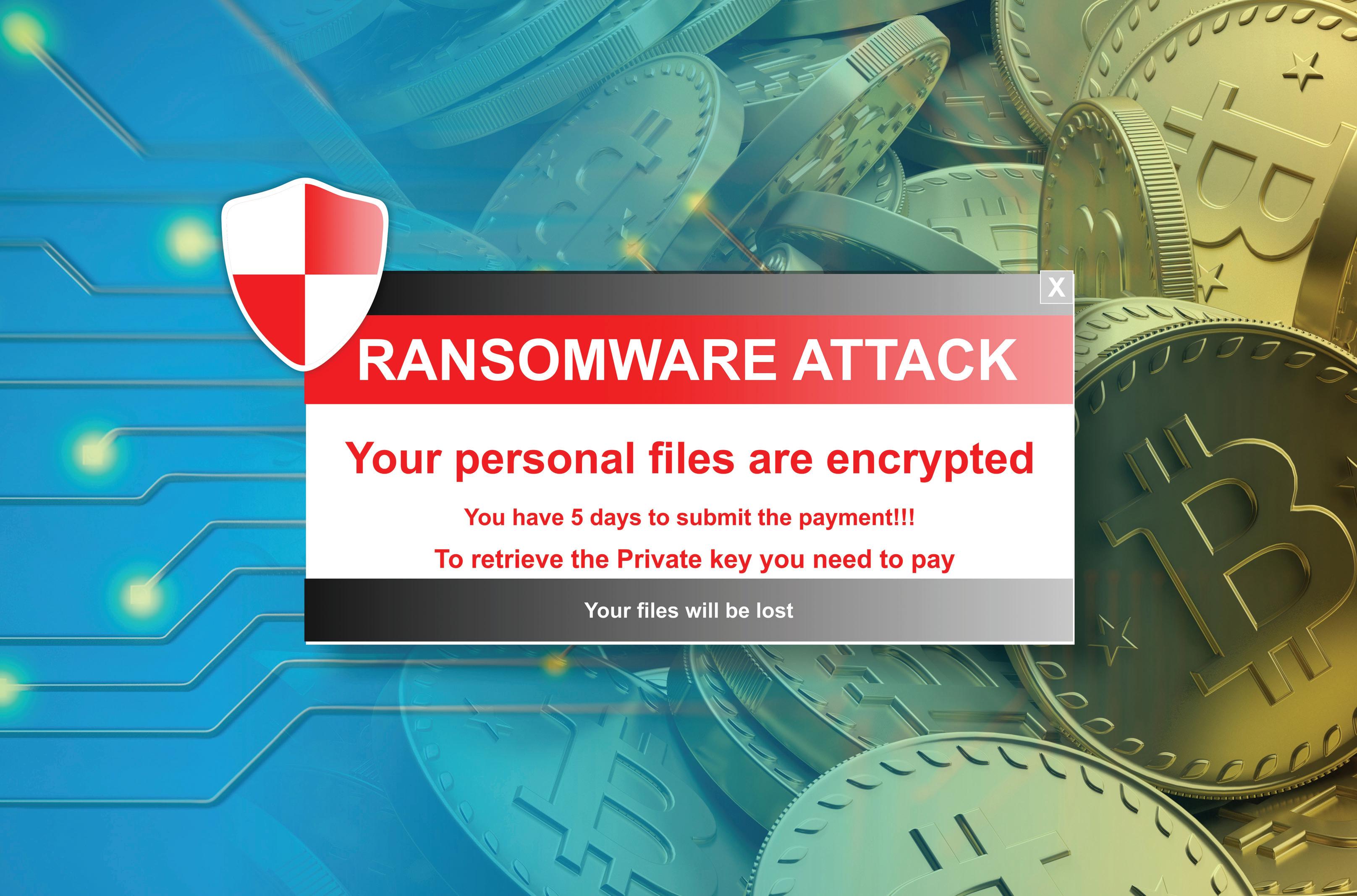
20 minute read
Economic Stimulus and Tax Extenders Ride the Coattails of Government Funding in the Consolidated Appropriations Act, 2021
By Don Carpenter and Tim Thomasson
In the waning days of 2020, President Trump signed into law the Consolidated Appropriations Act, 2021 (the Act), a $1.4 trillion omnibus spending bill that provides appropriations for funding 12 government departments. But this was overshadowed by the additional $900 billion included in the bill as a second round of economic stimulus in response to the pandemic, and new and extended tax provisions intended to advance the nation’s combined energy policy and further assist struggling families.
Pandemic Relief for Individuals with $600 Direct Payment
Modeled after the earlier stimulus checks disbursed in the spring of 2020, $166 billion of the pandemic relief appropriation was dedicated to direct payments to taxpayers. This provision was the focus of considerable debate.
Ultimately, it was settled that single taxpayers reporting up to $75,000 of adjusted gross income (AGI) on their 2019 income tax return would receive the full $600 payment with the amount being reduced ratably until full phase out at $87,000 of AGI. Married couples filing jointly receive $600 each if AGI does not exceed $150,000 with full phase out set at $174,000.
The payments to those qualifying as heads of household begin phase out at AGI of $112,500 (full phase out at $124,500). The remittance also includes $600 for each dependent child below 17 years of age. Eligible individuals must have a valid Social Security number and not be a nonresident alien or claimed as a dependent by anyone else. Each dependent child must also have a valid Social Security number or adoption taxpayer identification number.
The Department of Treasury was authorized to make advance payments based on taxpayers’ 2019 tax returns. Remittances were to be made via direct deposit for taxpayers for which the IRS has bank account information. All others would receive either paper checks or debit cards. Taxpayers who qualify but did not receive payments can claim the amount as a credit on their 2020 income tax return filed in 2021. Taxpayers will not be required to repay an advance stimulus payment that exceeds the amount of their eligible credit.
Other Provisions Target Specific Needs
In addition to stimulus checks, $120 billion was allocated for supplemental unemployment benefits: • The federal assistance will provide $300 per week to supplement state funded benefits for the period
December 26, 2020 through March 14, 2021. • Benefits are also available to self-employed individuals who self-certify that they have been impacted by COVID-19. • Maximum number of weeks an individual can claim benefits was extended to 50 weeks.
The Act also extended the national eviction moratorium that was put in place under the CARES Act. CARES delayed evictions for federally backed properties, which was then extended to all properties by the Centers for Disease Control and Prevention in September 2020. The moratorium, which was set to expire on December

31, was extended by a month to the end of January. The provision did not forgive past-due payments or related charges which become due at expiration.
In addition, the Act appropriated $25 billion for state and local governments to provide emergency rental assistance. To qualify, renters must spend 90% of any assistance received on rent (including past due payments), utility costs and costs associated with COVID-19. States are required to prioritize low income and unemployed renters.
Surprise Medical Billing Also Addressed
Although a focus for several years, Congress finally acted to address charges by health care providers for unexpected or excessive costs typically arising from out-of-network services. These costs generally arise when individuals are in emergency situations or have no other care alternatives. The charges are often incurred without prior knowledge or consent. The costs are not covered by the patient’s health plan and result in unexpected bills that can run to thousands of dollars.
The new restrictions become effective in 2022 and prohibit individuals from being charged out-of-network rates without consent for emergency care, air ambulance transport or when receiving non-emergency care at an in-network facility by out-of-network professionals.
In addition, the excess costs cannot be charged to the individual’s employer through an appeals process. Out-of-network costs will be required to be resolved through an arbitration procedure that must use median in-network rates as a guideline for dispute resolution. Guidance on these regulations will be forthcoming and will likely require health plans to be amended to conform to the provisions.
Paycheck Protection Plan (PPP) Round 2 Headlines Relief for Small Businesses
Not only did the Act allocate $284 billion for additional loans to qualified borrowers, it also clarified one of the most controversial aspects of the CARES Act.

Charitable Giving
The Act enhances tax incentives for charitable giving. CARES allows taxpayers who do not itemize their deductions to take up to a $300 deduction for AGI attributable to cash donations made to qualified charitable organizations in 2020. The Act extends this opportunity for cash donations made through December 31, 2021. The $300 limit remains intact.
In addition, CARES allowed taxpayers to substitute 100% for 60% when calculating the AGI limit for cash contributions made in 2020 to certain qualified charitable organizations. The Act extends this election for contributions made in 2021, as well. The CARES Act provided for loan forgiveness if no less than 60% of the loan amount was used to meet payroll over a covered period of either eight or 24 weeks. This provision is also available for loans issued under the current Act. But in Notice 2020-32 (and affirmed in Rev. Rul. 2020-27), the IRS took the position that any expense paid with proceeds of a forgiven PPP would not be tax deductible in spite of Congressional statements to the contrary.
The second round of PPP makes significant modifications to the earlier program. In addition to first-time borrowers, businesses that received a loan under CARES may also apply. However, previous recipients are limited the lesser of 2.5 times the average monthly payroll costs for the 12 months preceding the loan (or 2019) or $2 million and must meet the following criteria: • Must have 300 or fewer employees; • Must have used or will use the full amount of their first PPP loan; • Demonstrate that revenue declined by at least 25% in any quarter of 2020 when compared to the same quarter in 2019.
The qualified expenses that may be covered by the loans have also been expanded under the new program. The first round of loans was intended to cover payroll, rent, mortgage interest and utilities.
In the second round, the proceeds may also be used for: • Worker protection, such as personal protective equipment; • Facility modifications to meet
COVID-19 safety requirements; • Software, cloud computing and accounting costs that facilitate business operations; • Property damage costs due to looting or vandalism from public disturbances in 2020 not covered by insurance.
The Act also allows the borrower the option to choose any period beginning on the loan origination day and lasts between eight and 24
For loans of $150,000 or less, there is an expedited forgiveness process. The application for forgiveness will be an attested self-certification that provides the number of employees the business was able to retain as a result of the loan and the estimated amount of the loan used for payroll.
Two additional loan programs target specific businesses. An additional $20 billion was appropriated to fund the Small Business Administration’s Economic Injury Disaster Loan (EIDL) program for small businesses in lowincome communities. Applications can now be made for low interest rate loans with 30-year maturities through December 31, 2021.
To qualify, the business must: • Have no more than 300 employees; • Be located in a low-income community as defined by the new markets tax credit; and • Experience a decline in gross receipts of at least 30% during an eight-week period from March 2, 2020 to December 31, 2021 when compared to a comparable period in 2019 or 2020 prior to March 2.
Each applicant is limited to a loan of $10,000, which is reduced for any amount received under the CARES Act allocation.
An additional $15 billion was appropriated to assist liveperformance venues, movie theaters and museums. To qualify, the venue had to be fully operational on February 29, 2020. The initial grant is equivalent to 45% of 2019 revenue. A supplemental grant is available that is limited to 50% of the initial grant if the venue experienced revenue loss of at least 80% as of December 1, 2020. Taken together, the grants are capped at $10 million.
Businesses experiencing at least 90% revenue loss could apply within two weeks of the Act becoming law. All others that experienced at least 25% revenue loss could apply thereafter.
Other Business Provisions Further Encourage Retention of Employees
Many of the business provisions of pandemic relief focus on employee retention. The Act extended the employee retention tax credit and the deferred payroll tax provisions of CARES.
The employee retention tax credit that was set to expire on December 31, 2020 has been extended to June 30, 2021. The credit is also increased to 70% of qualified wages from the 50% credit provided under CARES.
Home Ownership
Prior tax law provided taxpayers an exclusion from gross income for forgiveness of qualified principal residence indebtedness up to $2 million ($1 million for married individuals filing separately). This exclusion would have expired for debt forgiveness arising after December 31, 2020. The Act extends this exclusion through December 31, 2025 but reduces the maximum amount to $750,000 ($375,000 for married individuals filing separately). In addition, the Act extends for one year the itemized deduction for home mortgage insurance premiums. This deduction, which is subject to phase-out for higher-income taxpayers, would have expired at the end of 2020. Finally, the Act extends the nonbusiness energy property credit by one year. This credit, which is available for purchases of qualifying energy property to be used in a taxpayer’s principal residence, was also set to expire at the end of 2020. It is capped at $7,000 per eligible employee ($10,000 wages X 70%) for each of the first two quarters of 2021 for a maximum credit of $14,000 per employee. The credit is not reduced for any amounts received under the CARES Act in 2020.
Several significant modifications to the credit when compared to the CARES Act retention credit should be noted: • To be eligible, a business must be fully or partially suspended under a COVID lockdown order or, under
CARES, the business must have experienced a reduction in gross receipts for the quarter of at least 50% when compared to the prior year quarter. The new Act requires a reduction of only 20%. • Under CARES, any business that received a PPP loan could not also claim the credit. This has been amended under the Act to allow a credit for any wages paid that are not funded by a forgiven PPP loan. The change is retroactive to
2020 wages, so companies should determine if there were excess qualified wages and consider filing amended payroll tax returns to claim the 2020 credit.
• Under CARES, the credit could only be claimed for businesses with 100 or more employees for wages paid when employees were not providing services. The restriction did not apply to smaller businesses.
The ACT raises the threshold to 500 or more employees. • In 2020, the credit did not apply to any pay increases. Under certain circumstances, pay increases will qualify in 2021. • For businesses with less than 500 employees, a mechanism will be put in place to allow for receipt of the credit prior to paying the qualified wages, which was not provided in 2020. Any overpayment of the credit will have to be repaid. • The credit has also been expanded to include certain governmental entities such as hospitals, universities or federal credit unions.
that was provided under the Families First Coronavirus Response Act for businesses with less than 500 employees has been extended from December 31, 2020 to March 31, 2021.
In August 2020, President Trump issued a Presidential Memorandum providing for the deferral of the withholding, deposit and payment of certain payroll tax obligations. The Treasury Department subsequently issued Notice 2020-65, indicating these provisions would, at the option of the employer, apply to an employee’s 6.2% portion of Social Security (OASDI) taxes on wages paid between September 1 and December 31, 2020 for any employees whose wages were less than the equivalent of $4,000 for a bi-weekly pay period.
Since this was a deferral and not an abatement, the taxes were to be withheld ratably from wages paid from January 1 to April 30, 2021, in addition to normal taxes required on those wages. The Act extended the catch-up period to include pay periods from January 1 until December 31, 2021.
The Act Also Contains Many Tax Provisions Impacting Individuals and Businesses
The Act includes a combination of routine, year-end tax extenders, enhancements to provisions enacted with CARES and new provisions attributable to the COVID pandemic. We have mentioned some of the provisions above. While the discussion below does not cover every tax provision in the Act, we discuss the ones we think will be most relevant to practitioners.
Individuals May Benefit from Additional Exclusions, Deductions and Credits
Many of the provisions target additional relief related to the COVID pandemic. We have already mentioned the second stimulus payments above. Although not specifically a tax provision, the filing of the 2020 tax return will be one mechanism certain taxpayers may utilize to receive any additional stimulus payment due. Some of the other more relevant forms of relief are discussed below.
Educators (kindergarten through the 12th grade) are allowed a deduction in arriving at AGI for certain unreimbursed business expenses, not to exceed $250 a year. Qualified expenses will now include personal protective equipment, disinfectant and other supplies used for the prevention of the spread of COVID-19, as long as these expenses are paid after March 12, 2020. In the area of higher education, the Act repeals (by not extending) the deduction for AGI of qualified tuition and other qualified higher education expenses. This deduction was originally set to expire at the end of 2017 but had been extended for each of 2018, 2019 and 2020.
In addition, under pre-CARES and pre-ACT, qualified education assistance provided by an employer was exempt from an employee’s gross income, up to a certain threshold. CARES expanded the definition of qualified education assistance to include student loan payments made either to the lender or the employee after March 27, 2020 and before January 1, 2021. The Act extends the inclusion of these loan payments in the definition of qualified education assistance through December 31, 2025.
Although not specific to COVID but related to higher education, changes are in store for education credits, as well. Previously, the Lifetime Learning Credit (LLC) was subject to a lower phase-out range than the American Opportunity Tax Credit (AOTC). The Act provides that the LLC is now subject to the same, higher phase-out range as the AOTC.
Taxpayers within certain ranges of earned income are eligible for refundable child tax and earned income credits. Under the Act, taxpayers can elect to substitute earned income from 2019 for 2020, if the amount from 2019 is higher. This election may help taxpayers experiencing lower AGI in 2020 due to the pandemic.

Given the pandemic and disruption or loss of wages, medical costs currently represent a significant burden on many taxpayers. The Act contains four key provisions that provide some relief. The AGI threshold for deducting medical expenses from AGI was previously set to increase from 7.5% to 10% for tax years beginning after December 31, 2020. The Act makes the more beneficial 7.5% threshold permanent.
Also, the health coverage tax credit (HCTC) was due to expire December 31, 2020. The Act extends the HCTC, which provides a refundable credit to certain individuals for health insurance, through December 31, 2021. Individuals who participate in either health or dependent care flexible spending accounts (FSAs) through their employer now have a longer grace period to utilize unused benefits or contributions to these accounts. The Act allows employers to extend the grace period by 12 months for 2020 and 2021.
Accordingly, an employee now has until December 31, 2021 to utilize unused contributions to, and benefits from, an FSA in 2020. Likewise, an employee has until December 31, 2022 to utilize such unused contributions and benefits from an FSA in 2021. The employer must allow for these extended grace periods.
Additional Disaster Relief is on the Way
The Act provides tax relief in a couple of ways for taxpayers experiencing hardship attributable to a loss arising from a federally declared disaster.
Under pre-Act law, individual taxpayers could claim an itemized deduction for personal casualty losses attributable to a federally declared disaster. However, each loss was subject to a $100 floor and the itemized deduction only applied to the extent the sum of all eligible net casualty losses exceeded 10% of a taxpayer’s AGI.
Under the Act, such losses are now subject to a $500 floor. However, these losses will not be subject to the 10% of AGI reduction. Also, if a taxpayer does not claim itemized deductions, the net casualty losses can be added to the standard deduction.
Taxpayers under the age of 59.5 are generally subject to a 10% early distribution penalty for distributions from an employer retirement plan. The Act excludes a “qualified disaster distribution” from the 10% penalty. In addition, the taxable amount of any such distribution can be included in gross income ratably over a threeyear period, beginning in the year of distribution.
The Act clarifies that no deduction will be denied nor will any gross income be included as a result of the forgiveness of a PPP loan.
A “qualified disaster distribution” is one made to a taxpayer who resides in a federally declared disaster area and suffers a loss resulting from such disaster, and is made during the period beginning with the first day of the disaster and ending 180 days after the enactment of the Act. There is a $100,000 limit, cumulative for all tax years, on the amount of distributions eligible for this relief.
Many Provisions Will Have a Favorable Impact on Businesses
We mentioned above what is likely the biggest tax news for businesses. The Act clarifies that no deduction will be denied for otherwise deductible costs attributable to PPP loans that are ultimately forgiven. This removes uncertainty for tax practitioners who otherwise were faced with many compliance issues, especially when the debt forgiveness occurs in 2021 but the expenses were incurred in 2020.
We also discussed above the extension of the employee retention tax credit. In addition, the Act extended the employer credit for paid family and medical leave through 2025. This elective benefit provides employers with a tax credit for wages paid to qualified employees on family or medical leave. This credit is a percentage of the underlying wages, beginning at 12.5% if the paid leave is at least 50% of such wages. The credit increases as the paid leave as a percentage of normal wages increases but is capped at 25%. An employer may take this credit for up to 12 weeks of paid leave per employee.
The Act also provides an expanded charitable contributions deduction for corporations. Under pre-Act and pre-CARES law, a corporation’s charitable contribution deduction was limited to 10% of adjusted taxable income, with any disallowed contributions eligible for a fiveyear carryforward. CARES allowed corporations to disregard the 10% limitation for cash contributions made to 50% charitable organizations. Such contributions, however, could not exceed the excess of 25% of a corporation’s adjusted taxable income over all other contributions deducted in 2020.
The Act now allows a corporation to deduct qualified disaster relief contributions up to 100% of adjusted taxable income. Qualified disaster
relief contributions must be paid during a period beginning January 1, 2020 and ending 60 days after the enactment of the Act. The contribution must be made for relief efforts in a federally declared disaster area. A corporation is also required to obtain written documentation from the recipient confirming that the contribution will be used for disaster relief.
Both the work opportunity tax credit and the new markets tax credit programs, originally set to expire at the end of 2020, are extended through of energy. The energy efficient commercial buildings deduction under IRC Section 179D, originally set to expire December 31, 2020, is now permanent. This law allows businesses to immediately deduct energy efficient improvements to lighting, heating, cooling, ventilation and hot water systems of commercial buildings.
The deduction ranges from $0.60 to $1.80 per square foot of construction, determined by whether or not the entire building meets certain energy standards. In addition to making this
A Boost for the Dining Food Service Industry
One of the provisions receiving the most publicity is a temporary lifting of the 50% limit on the deductibility of business meals provided by a restaurant for 2021 and 2022. In addition to providing tax relief to businesses, this provision is intended to boost the struggling food service industry. This benefit applies not only to meals on the restaurant’s premises, but also to takeout and delivery services. Businesses must continue to meet the existing requirements for the deductibility of meals. Therefore, the meals cannot be lavish or extravagant, the business owner or an employee must be present, and the substantiation requirements still apply. Entertainment expenses will continue to be nondeductible. If food or beverages are provided in conjunction with an entertainment activity, either they must be purchased separately from the entertainment or their cost must be separately stated on the bill. While businesses certainly welcome this temporary relief, they will need to quickly implement procedures to properly track meals eligible for the 100% deduction.
2025. The work opportunity tax credit provides employers with an elective tax credit based on first-year wages paid to new hires from 10 targeted groups. The new markets tax credit, which applies to individuals as well, is equal to 39% of capital invested in a qualified community development entity. A qualified community development entity must loan or invest substantially all of its capital in businesses operating in low-income communities.
Additional Provisions Support Energy Efficiency
The Act continues the trend of supporting the efficient use deduction permanent, the Act adds an inflation adjustment.
Several other tax credits related to energy efficiency, originally set to expire at the end of 2020, were extended. These include the: • Credit for electricity produced from certain renewable resources, such as wind and solar energy; • Second-generation biofuel producer credit; • Alternative fuel refueling property credit; and • Excise tax credit relating to alternative fuels.
There are other notable extensions through 2025 in the Act attributable to businesses. These include the following: • The look-thru rule for related
Controlled Foreign Corporations for purposes of determining the deemed inclusion under Subpart F; • Seven-year recovery period for motorsports entertainment complexes; • Deduction (up to $15 million) for qualified film, television and theatrical productions; • Various empowerment zone tax incentives; and • The carbon oxide sequestration credit.
These extensions apply through the end of 2021: • The Indian employment credit (extended for one year); • The mine rescue team training credit (extended for one year); • Three-year recovery period for race horses two years old or younger (extended one year); and • Accelerated depreciation for business-use property located on an Indian reservation (extended one year).
For an election year, 2020 saw major economic and tax legislation. The Biden administration also promised that this is not the end of government assistance to buttress the economy and assist struggling families. With that in mind, 2021 promises to be just as interesting.
ABOUT THE AUTHORS:
Don Carpenter, MSAcc/CPA, is clinical professor of accounting in the Hankamer School of Business at Baylor University. Contact him at Don_ Carpenter@baylor.edu.
Timothy S. Thomasson, CPA, MTAX, is Graduate Program Director and an associate clinical professor in the Hankamer School of Business at Baylor University. He is also a practicing CPA. Thomasson can be reached at Timothy_ Thomasson@baylor.edu.









